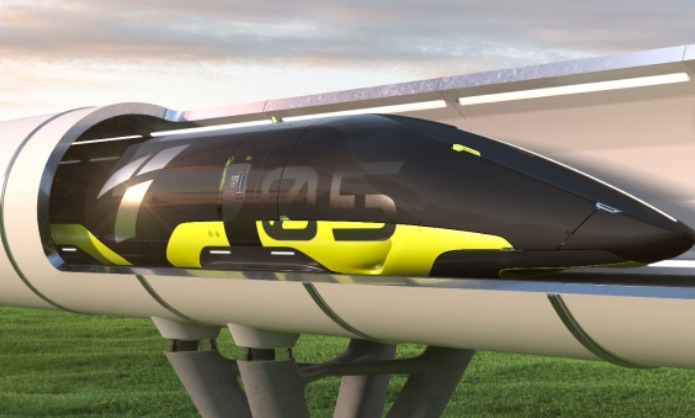Some people may be surprised to learn that the Hyperloop is actually a train that travels through a vacuum-sealed tube. It’s designed to travel up to 700 miles per hour and can carry passengers or cargo.
People are excited about the potential of the Hyperloop because it has the potential to revolutionize transportation. It could theoretically make it possible to travel from Los Angeles to San Francisco in just 30 minutes.

Hyperloop is a new way to move people and things quickly from one place to another. It’s based on the idea of using a vacuum tube to move capsules or pods through a low-pressure environment at high speeds. Here are 10 interesting facts about Hyperloop:
The hyperloop is a new mode of transportation that could revolutionize the way we travel. The concept is simple: passengers or cargo are loaded into a capsule, which is then sealed inside a low-pressure tube. This allows the capsule to reach high speeds with very little friction, making it possible to travel long distances in a short amount of time.
The hyperloop will be faster than an airplane and exert a 0.5 G-force while running. It’s going have an effect on your body that might be nausea or giddy at times, depending how you’re feeling when riding it!
The hyperloop project will be powered by solar panels, which are designed in a way that they can produce more energy than what’s needed for their own operation. The Tesla Motors‘ innovative approach to electricity has been recognized as one of the greatest advancements this world has ever seen!
The journey is safe and sound, no matter what obstacles come in your way. You can rest assured that if anything were to happen on the road- power cuts or traffic jams for example – it would not affect this ride!
In the eyes of Elon Musk, hyperloop will be more like a horizontal roller coaster than anything else. At first glance, the idea of a horizontal roller coaster may seem a little odd. After all, most of us are used to thinking about roller coasters as twisting and turning rides that send us soaring through the air at breakneck speeds. And while it’s true that hyperloop technology does indeed promise to deliver a unique and exhilarating ride, it will also be unlike anything we’ve ever experienced before.
According to recent estimates, the pipes of a hyperloop system can elongate by up to 50m on every 100km route. To put that into perspective, the height of The Arc de Triomphe is about 50m. In other words, the pipes of a hyperloop system can potentially stretch to the height of one of the world’s most famous monuments. Of course, this is just an estimate, but it gives you an idea of the scale we’re talking about. When it comes to the hyperloop, size really does matter.
The concept of the hyperloop has gained a lot of attention in recent years, thanks to its revolutionary approach to transportation. This innovative system utilizes magnetic levitation and air cushion technology to propel passenger pods through a network of tubes at high speeds. With its low friction design and sleek look, this cutting-edge solution has the potential to completely transform how we travel and interact with the world around us.
For many years, the transportation industry has been stuck in a rut. Most cities are still relying on traditional train networks to transport their citizens from one point to another, and these systems can be prohibitively expensive. According to estimates, it costs about 10 times more to build a traditional train network than to construct the revolutionary Hyperloop technology. Not only does this innovative system save money on initial construction costs, but it is also much cheaper to operate in the long run.
Over 700 teams stepped up to the challenge, submitting designs and blueprints for the Hyperloop hardware that would eventually be evaluated and refined by a select group of finalists in a SpaceX competition. In the end, 22 teams made it through to the next stage, demonstrating both innovative ideas and reliable engineering techniques. With these groups now hard at work designing and building their components, it is clear that we are closer than ever to bringing this radical new transportation technology to life.
Traveling by hyperloop is a relatively new and exciting concept, but many people are skeptical of the real cost to users. According to recent estimates, it can be as cheap as just 20 dollars for a 900-km journey! This means that travel by hyperloop is actually more affordable than most forms of transportation, such as planes, trains, or cars. Furthermore, because hyperloops can travel at very high speeds, users will be able to cover long distances in a matter of hours, saving them valuable time that would otherwise be wasted on traveling.

